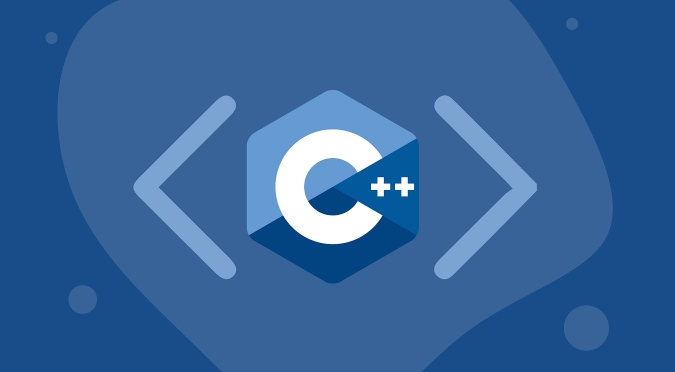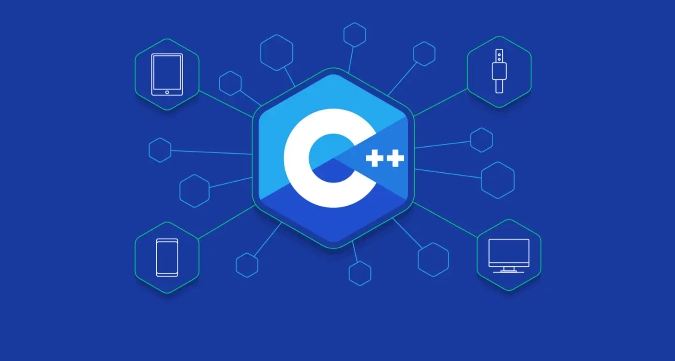C tutorial with exercises and solutions
Jun 27, 2025 am 01:41 AMTo effectively learn C, you need to combine theory and practice and continue to practice. 1. Start with basic grammar and core concepts, master variables, data types, control structures, functions and arrays, and consolidate knowledge through simple programs such as summing and judging prime numbers; 2. Apply what you have learned through structured exercises, try to solve common questions such as input and output processing, conditional logic, loop problems, array operations, and understand reference answers in a daze rather than direct copying; 3. Through project practice object-oriented programming (OOP), such as building bank account systems, student management systems and shape area calculation modules, to improve code organization capabilities; 4. Use online platforms such as LeetCode, HackerRank, Codecademy and SoloLearn for interactive learning, obtain immediate feedback and prompts, thereby efficiently improving programming skills.

Learning C effectively means combining theory with practice. While reading about syntax and concepts is a good start, you really solidify your understanding when you write actual code. A well-structured tutorial that includes exercises and solutions helps you do just that.

Here's how to approach learning C with hands-on practice.

1. Start with the Basics: Syntax and Core Concepts
Before jumping into complex problems, make sure you understand the basic building blocks of C . This includes variables, data types, control structures (like loops and conditions), functions, and arrays.
Key things to focus on:

- How to declare and use variables
- The difference between
int,float,char, andbool - Writing simple
if-elsestatements and loops (for,while) - Creating and calling functions
- Using arrays to store multiple values
A common beginner exercise is writing a program that calculates the sum of numbers from 1 to N using a loop. Try modifying it to calculate the product instead, or check if a number is prime.
2. Practice with Structured Exercises and Solutions
Once you're comfortable with the basics, work through structured programming exercises. These help you apply what you've learned in different contexts.
Some typical problem categories:
- Input/output handling (eg, reading user input and displaying results)
- Conditional logic (eg, grading systems based on scores)
- Loop-based problems (eg, Fibonacci sequences, factorial calculations)
- Array manipulation (eg, sorting, searching)
For example, try writing a program that takes an array of integers and finds the second largest number. It's not too hard, but it forces you to think about comparisons and tracking values ??during iteration.
When you're stuck, look at the solution—but don't just copy it. Understand each line and ask yourself why certain decisions were made.
3. Tackle Object-Oriented Programming (OOP) Through Projects
C is known for its support of object-oriented programming. Once you've got the basics down, dive into classes, objects, inheritance, and polymorphism.
Good OOP exercises include:
- Building a simple bank account system with deposit/withdraw functions
- Creating a student management system with data encapsulation
- Implementing shapes like rectangles and circles with area calculation methods
These kinds of exercises push you to organize your code better and understand how real-world programs are structured.
If you're new to OOP, start by defining a class with private member variables and public methods to access them. Then, create derived classes that inherit and extend functionality.
4. Use Online Platforms for Interactive Learning
There are several platforms offering C tutorials with built-in coding exercises and immediate feedback. Some popular ones include:
- LeetCode – Great for algorithm practice
- HackerRank – Offers structured C tracks
- Codecademy – Interactive lessons with quizzes
- SoloLearn – Mobile-friendly coding challenges
These sites often give hints or partial solutions if you get stuck, which keeps you moving forward without frustration.
Getting comfortable with C doesn't happen overnight, but consistent practice with real problems speeds up the process. If you're serious about learning, pick a few exercises each day and walk through their solutions carefully.
That's pretty much it—no shortcuts, but plenty of hands-on opportunities.
The above is the detailed content of C tutorial with exercises and solutions. For more information, please follow other related articles on the PHP Chinese website!

Hot AI Tools

Undress AI Tool
Undress images for free

Undresser.AI Undress
AI-powered app for creating realistic nude photos

AI Clothes Remover
Online AI tool for removing clothes from photos.

Clothoff.io
AI clothes remover

Video Face Swap
Swap faces in any video effortlessly with our completely free AI face swap tool!

Hot Article

Hot Tools

Notepad++7.3.1
Easy-to-use and free code editor

SublimeText3 Chinese version
Chinese version, very easy to use

Zend Studio 13.0.1
Powerful PHP integrated development environment

Dreamweaver CS6
Visual web development tools

SublimeText3 Mac version
God-level code editing software (SublimeText3)

Hot Topics
 C Polymorphism: Enhancing Code Reusability and Flexibility
Jun 10, 2025 am 12:04 AM
C Polymorphism: Enhancing Code Reusability and Flexibility
Jun 10, 2025 am 12:04 AM
Polymorphism in C is implemented through virtual functions and abstract classes, enhancing the reusability and flexibility of the code. 1) Virtual functions allow derived classes to override base class methods, 2) Abstract classes define interfaces, and force derived classes to implement certain methods. This mechanism makes the code more flexible and scalable, but attention should be paid to its possible increase in runtime overhead and code complexity.
 C Polymorphism : is function overloading a kind of polymorphism?
Jun 20, 2025 am 12:05 AM
C Polymorphism : is function overloading a kind of polymorphism?
Jun 20, 2025 am 12:05 AM
Yes, function overloading is a polymorphic form in C, specifically compile-time polymorphism. 1. Function overload allows multiple functions with the same name but different parameter lists. 2. The compiler decides which function to call at compile time based on the provided parameters. 3. Unlike runtime polymorphism, function overloading has no extra overhead at runtime, and is simple to implement but less flexible.
 C Destructors code samples
Jun 13, 2025 am 12:04 AM
C Destructors code samples
Jun 13, 2025 am 12:04 AM
The destructor in C is used to free the resources occupied by the object. 1) They are automatically called at the end of the object's life cycle, such as leaving scope or using delete. 2) Resource management, exception security and performance optimization should be considered during design. 3) Avoid throwing exceptions in the destructor and use RAII mode to ensure resource release. 4) Define a virtual destructor in the base class to ensure that the derived class objects are properly destroyed. 5) Performance optimization can be achieved through object pools or smart pointers. 6) Keep the destructor thread safe and concise, and focus on resource release.
 How to Implement Polymorphism in C : A Step-by-Step Tutorial
Jun 14, 2025 am 12:02 AM
How to Implement Polymorphism in C : A Step-by-Step Tutorial
Jun 14, 2025 am 12:02 AM
Implementing polymorphism in C can be achieved through the following steps: 1) use inheritance and virtual functions, 2) define a base class containing virtual functions, 3) rewrite these virtual functions by derived classes, and 4) call these functions using base class pointers or references. Polymorphism allows different types of objects to be treated as objects of the same basis type, thereby improving code flexibility and maintainability.
 What Are the Different Kinds of Polymorphism in C ? Explained
Jun 20, 2025 am 12:08 AM
What Are the Different Kinds of Polymorphism in C ? Explained
Jun 20, 2025 am 12:08 AM
C has two main polymorphic types: compile-time polymorphism and run-time polymorphism. 1. Compilation-time polymorphism is implemented through function overloading and templates, providing high efficiency but may lead to code bloating. 2. Runtime polymorphism is implemented through virtual functions and inheritance, providing flexibility but performance overhead.
 C Destructors: Common Errors
Jun 20, 2025 am 12:12 AM
C Destructors: Common Errors
Jun 20, 2025 am 12:12 AM
C destructorscanleadtoseveralcommonerrors.Toavoidthem:1)Preventdoubledeletionbysettingpointerstonullptrorusingsmartpointers.2)Handleexceptionsindestructorsbycatchingandloggingthem.3)Usevirtualdestructorsinbaseclassesforproperpolymorphicdestruction.4
 C : Is Polymorphism really useful?
Jun 20, 2025 am 12:01 AM
C : Is Polymorphism really useful?
Jun 20, 2025 am 12:01 AM
Yes, polymorphisms in C are very useful. 1) It provides flexibility to allow easy addition of new types; 2) promotes code reuse and reduces duplication; 3) simplifies maintenance, making the code easier to expand and adapt to changes. Despite performance and memory management challenges, its advantages are particularly significant in complex systems.
 Polymorphism in C : A Comprehensive Guide with Examples
Jun 21, 2025 am 12:11 AM
Polymorphism in C : A Comprehensive Guide with Examples
Jun 21, 2025 am 12:11 AM
Polymorphisms in C are divided into runtime polymorphisms and compile-time polymorphisms. 1. Runtime polymorphism is implemented through virtual functions, allowing the correct method to be called dynamically at runtime. 2. Compilation-time polymorphism is implemented through function overloading and templates, providing higher performance and flexibility.






